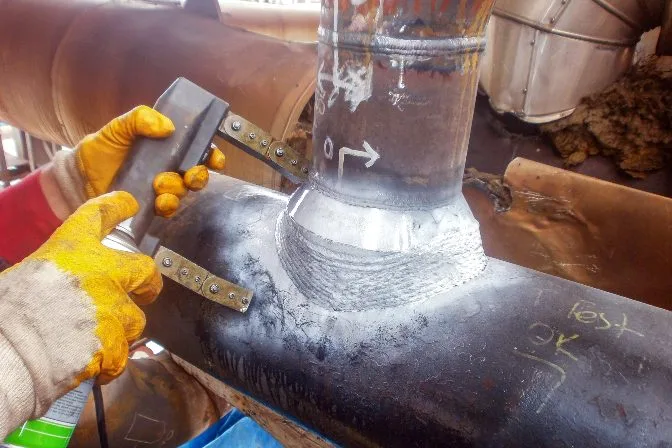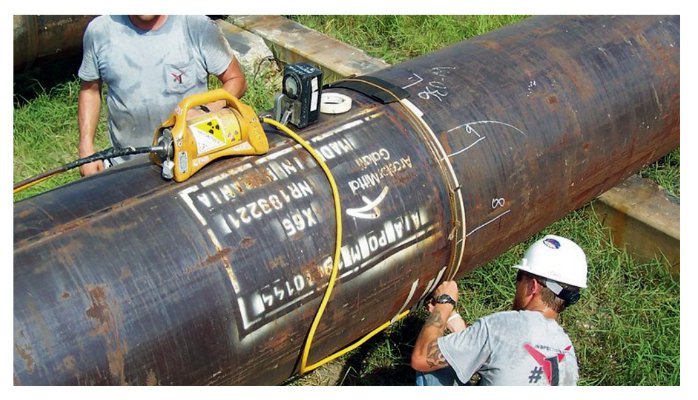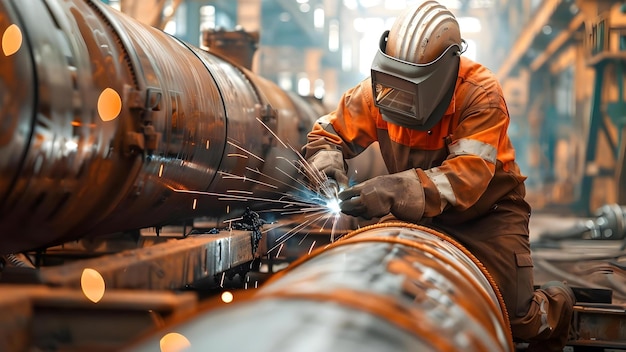Comprehensive Overview to Effective Tank Welding Examination Techniques and Best Practices for Top Quality Guarantee
In the world of storage tank welding, rigorous evaluation techniques are vital for protecting architectural stability and making sure conformity with market regulations. As we discover these vital parts, it ends up being clear that a proactive assessment technique is not simply valuable, but important for operational success in environments dealing with harmful materials.
Significance of Tank Welding Evaluation

Container welding inspection functions as a preventative action, identifying possible issues such as cracks, porosity, or inappropriate joint infiltration prior to they escalate into significant issues. Normal evaluations not just abide with industry laws and criteria yet also boost the long life of the storage tanks, decreasing the need for pricey fixings or substitutes.

Visual Assessment Strategies
Employing organized visual assessment techniques is important for assessing the high quality and integrity of welded joints in storage tanks. This method works as the first line of defense in determining prospective defects such as splits, damages, and insufficient penetration. The assessor ought to approach the job with a keen eye, making use of suitable tools like amplifying glasses, flashlights, and mirrors to enhance exposure.
During the evaluation procedure, the assessor ought to examine the weld profile, ensuring it sticks to defined requirements and standards (Tank Welding Inspection). This includes analyzing the grain width, height, and combination with the base material. Assessors need to also pay very close attention to the bordering locations for indications of thermal distortion or contamination that might affect the weld's performance
Paperwork of findings is essential; assessors must videotape any kind of anomalies, categorizing them by severity for more assessment. This organized technique not only help in instant problem identification however also adds to long-lasting quality control by making certain conformity with industry criteria. Routine training and calibration of aesthetic inspection strategies better improve the dependability of assessments, inevitably leading to much safer and a lot more sturdy tank frameworks.
Non-Destructive Testing Techniques
Non-destructive testing (NDT) techniques are regularly employed in tank welding examinations to examine the honesty of bonded joints without endangering their structural stability. These methods are crucial for identifying flaws such as fractures, spaces, and inclusions that might cause disastrous failures if left undiscovered.
Typical NDT techniques include ultrasonic testing (UT), which uses high-frequency sound waves to identify internal defects; radiographic screening (RT), employing X-rays or gamma rays to picture weld structures; and magnetic particle screening (MT), which discloses surface area and near-surface gaps in ferromagnetic materials (Tank Welding Inspection). Fluid penetrant screening (PT) is also extensively utilized, efficient in identifying surface-breaking problems by using a fluorescent or shade comparison dye
Each NDT technique has its certain applications and advantages, making it necessary for inspectors to select the suitable method based upon the material and the sort of weld being assessed. The integration of these NDT techniques into the assessment procedure boosts the overall quality control structure, making sure that bonded tanks fulfill security and efficiency standards. Inevitably, NDT plays an essential role in keeping article source the honesty and longevity of storage tank structures in numerous industrial applications.

Paperwork and Reporting
Making certain complete documents and coverage throughout tank welding examinations is crucial for maintaining compliance with industry criteria and assisting in reliable communication among stakeholders. Correct paperwork offers as an extensive document of evaluation tasks, findings, and any type of restorative actions taken throughout the welding process. This info is vital not just for quality control yet additionally for audits and regulatory testimonials.

A well-structured evaluation report ought to include information such as the date of inspection, names of inspectors, welding procedures employed, products made use of, and any discrepancies from established requirements. In addition, pictures and diagrams can improve the clarity of the record, providing aesthetic helpful site context to the findings. It is also crucial to document any kind of non-conformities together with their resolution, ensuring that all stakeholders are informed of possible risks and the steps required to reduce them.
Additionally, maintaining a central database for all evaluation records enables simple access and evaluation, cultivating a culture of openness and responsibility. By focusing on precise documents and coverage, companies can not just support quality control but additionally strengthen their reputation within the market, why not find out more inevitably causing enhanced safety and operational efficiency.
Constant Renovation Practices
Constant renovation methods are necessary for improving the top quality and effectiveness of container welding inspections. One efficient technique includes regular training and upskilling of assessment workers to remain abreast of the latest welding technologies and standards.
Furthermore, utilizing data-driven analysis enables companies to track examination outcomes, identify fads, and determine locations for renovation. Using devices such as source evaluation can help in comprehending the underlying concerns causing defects, making it possible for targeted treatments. Additionally, obtaining feedback from evaluation teams and stakeholders develops a collective setting that motivates ingenious options.
Integrating innovative technologies, such as automated evaluation systems and real-time tracking, can considerably improve the accuracy and speed of examinations. Regular audits of the inspection processes additionally add to a culture of responsibility and constant improvement. Ultimately, these continuous enhancement practices not just boost the high quality of storage tank welding assessments however additionally add to general operational quality and client complete satisfaction.
Conclusion
To conclude, efficient storage tank welding evaluation is critical for guaranteeing the structural stability and safety and security of storage systems, particularly those handling hazardous products. Using a mix of aesthetic examination strategies and non-destructive testing techniques promotes the very early identification of defects, therefore preserving conformity with industry requirements. In addition, durable paperwork and a dedication to continuous renovation enhance quality assurance methods. Eventually, these measures add substantially to functional quality and the avoidance of potential safety and security risks.